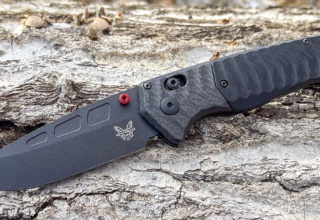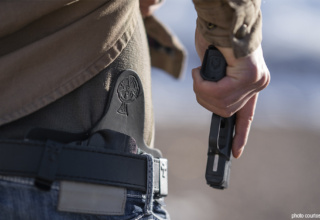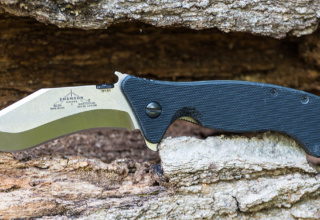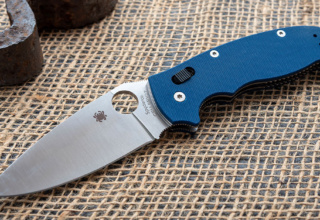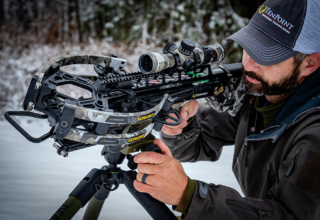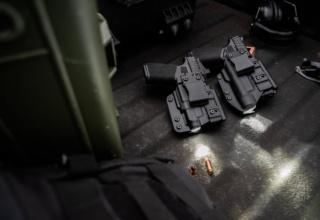A lightweight, durable, and ultra-versatile blade, Benchmade’s Bugout makes a perfect pocket companion. Though designed as an outdoor adventure-style knife, it shines with the EDC crowd.
by Dexter Ewing; photography by Marty Stanfield, Marty Stanfield Photography
Now and then, a knife company will introduce a model to the knife market, and it is just right. The materials, design, pricing, and availability align, and the knife becomes a hit with consumers everywhere. If you’ve been into knives for a while, you have witnessed this happening a time or two. It’s the knife everyone is talking about.
One such knife is the Benchmade Bugout. The knife suits many scenarios and situations, and it is offered in various handle materials, blade materials, and sizes to appease the most fickle of knife enthusiasts.
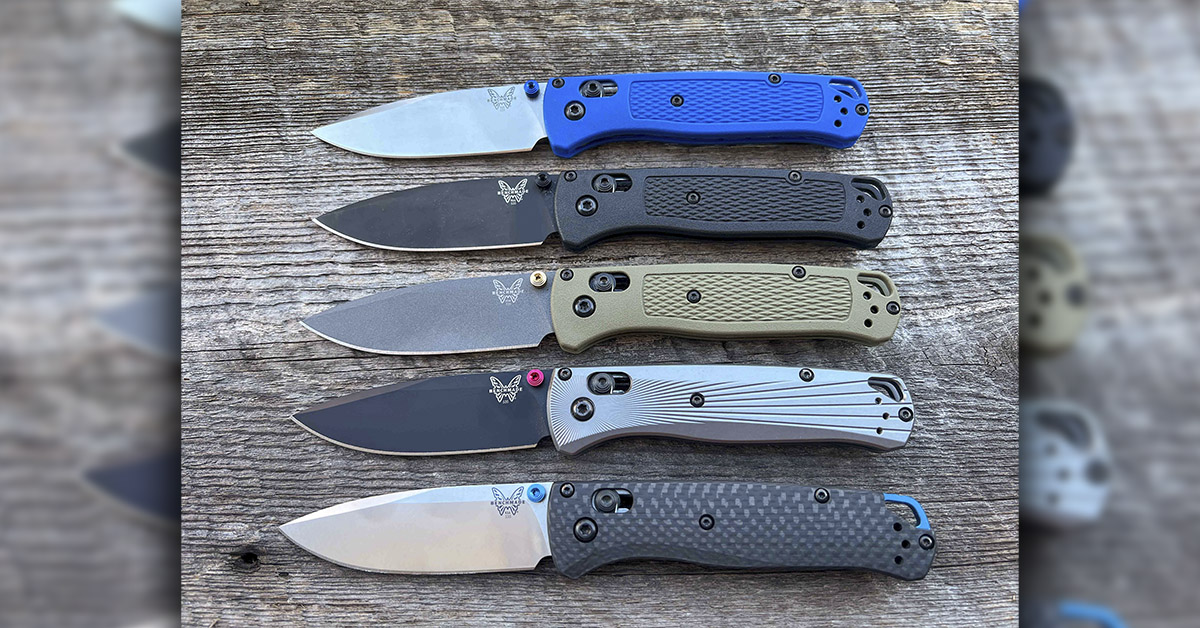
What exactly makes this model so popular with knife consumers?
Let’s explore.
Originally designed and engineered for outdoor enthusiasts as a highly versatile, minimalistic weighted lock-blade folding knife, the EDC crowd quickly appreciated the characteristics that make this a functional option in the outdoor segment.
Now, the Bugout is considered one of the most popular EDC folding knives of modern times. Various aftermarket handles for the Bugout are also available for purchase at select knife retailers on the internet. These popular synthetic materials allow you to customize your Bugout and make it truly unique.
More about these later.
The first Bugout was the model 535 — the largest of the family. With a blade length of 3.24 inches, the Bugout’s blade is ground from premium CPM S30V stainless steel. This is a steel highly regarded by discriminating knife enthusiasts as one of the best high-end materials and is very wear-resistant and able to go the distance without frequent resharpening.
The blade is easily and quickly opened via ambidextrous thumb studs, allowing blade deployment with either hand. The thin and slender handle is 4.2 inches long and made from injection molded Grivory, an engineered reinforced thermoplastic that is very lightweight and rigid. Other Bugout variants are available with aluminum, carbon fiber, and CF Elite (carbon fiber-reinforced thermoplastic).
Benchmade’s own Axis Lock blade locking mechanism helps to secure the blade rigidly in the open position. This crossbar lock is genuinely ambidextrous, allowing easy lock operation with either hand. Use your thumb to pull back on the lock and release the button to unlock. It doesn’t get easier than this.
The Bugout, via a low profile, deep carry pocket clip, holds the knife shallow in the pocket. An additional set of screw holes on the opposite side mean the clip can be flipped for left-handed users. The Bugout is truly an ambidextrous folder, and this characteristic has won the Bugout many fans. The overall length, with the blade open, is 7.4 inches, which is comfortable. Long enough to be effective but not too long as to be uncontrollable.
For those who like smaller folders, the 533 Mini Bugout is what you need. A scaled-down version of the larger 535 Bugout, the Mini Bugout’s 2.8-inch blade length is compact enough to be very pocket friendly and has an overall length of just under 6 ½ inches. Like the larger Bugout, the drop-point blade is S30V premium stainless steel, with ambidextrous thumb studs for easy and quick opening.
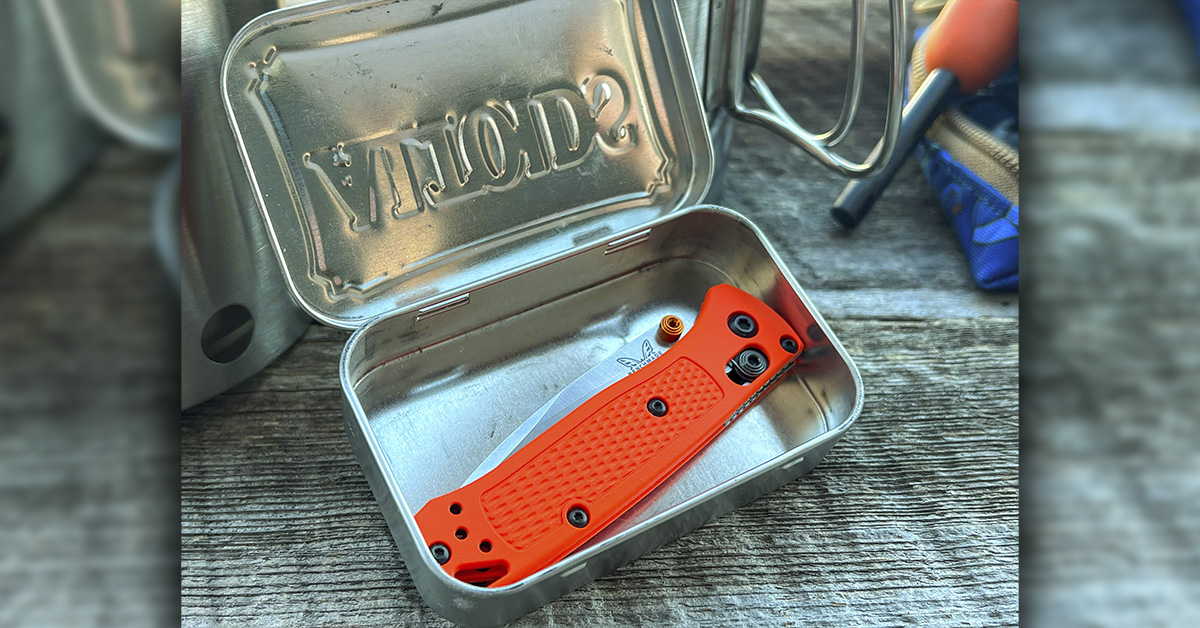
The handle is Grivory or CF Elite (depending on color). You can choose orange, white, or black (CF Elite). A mini deep carry pocket clip with the same mounting arrangement as the large Bugout helps the Mini Bugout ride in your pocket. This scaled-down version is truly ultra-low profile and is perfect for those with smaller hands, given the size. So, you have two options — full size or mini — based on your needs and preferences.
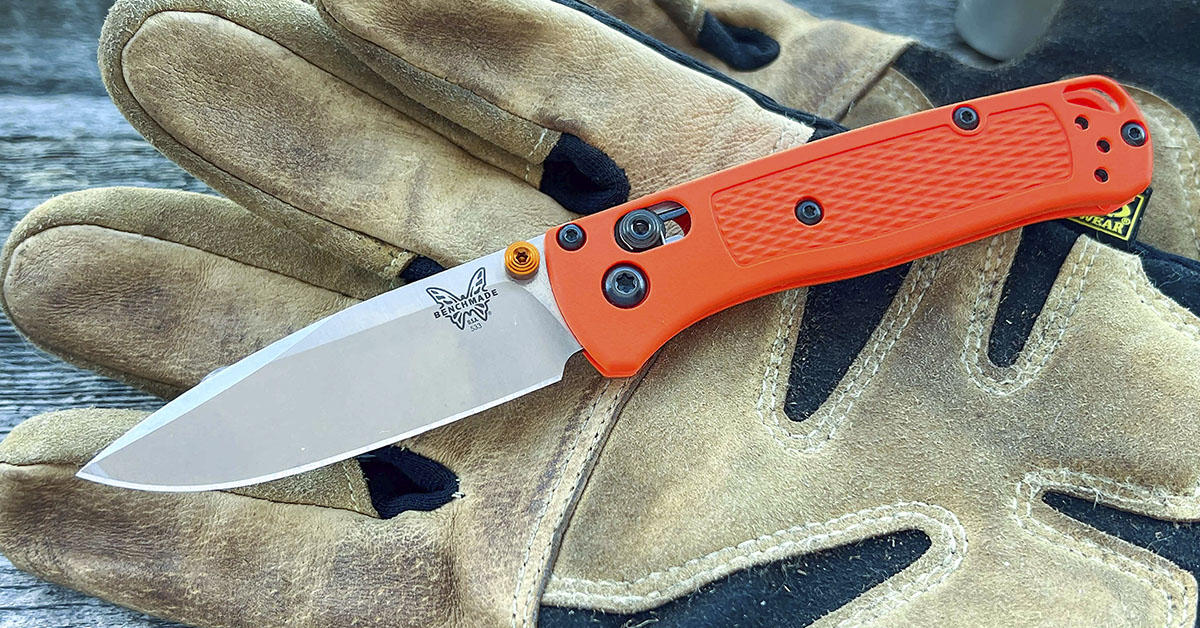
You can easily judge a knife’s popularity by its number of variants. The Bugout has a small series of variants, so now you can have the base model 535 with the blue Grivory handle and satin-finished S30V blade, or you can upgrade to one of these variants for a more exciting version.
The 535BK-2 offers up the Bugout in an all-black tactical appearance with a black CF Elite handle and a Cerakote black-coated blade. The 535GRY-1 is also eye-catching for the outdoorsy crowd with its tungsten gray Cerakote-coated S30V blade paired with a ranger green Grivory handle.
For those who like high-tech, there is the 535-3, which has carbon fiber handles and an upgraded CPM S90V blade for ultimate edge holding. Then there’s the 535BK-4, the ultimate Bugout with its black Cerakote-coated Bohler M390 blade and gray anodized aluminum handles. The handles sport a neat ray machining pattern, with the rays radiating outward from the pivot bolt. These are just some of the variants available, but not all. Consult the Benchmade website to see all the variants of both Bugout sizes.
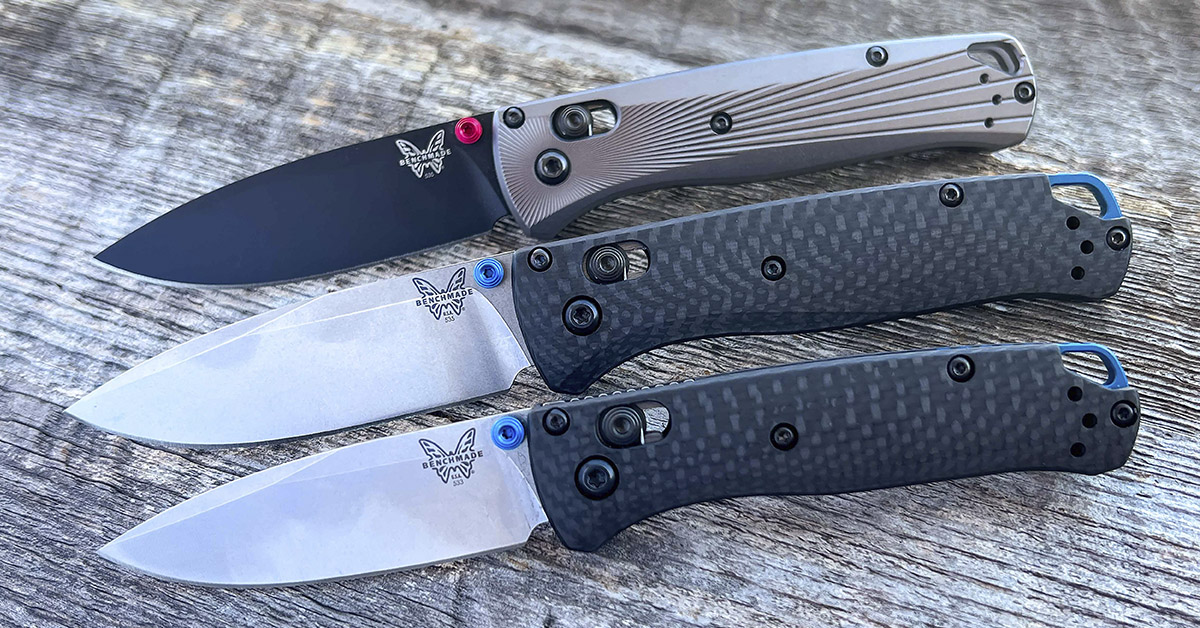
The Bugout in action is cutting efficiency at its finest. While basic in form, the drop-point blade is executed nicely and is evident when you put the Bugout to use. The full flat grind thins out the blade’s cross-section well to where it is a very effective cutting tool. The blade can glide through a variety of materials easily. The bite of the edge is fantastic, thanks in part to the flat grind. It will bite hard into any material, easily slicing right through cardboard and a thick rubber hose. It’ll work just as well as a personal folding steak knife and a paring knife in the kitchen for food prep or a paring knife when you are out camping.
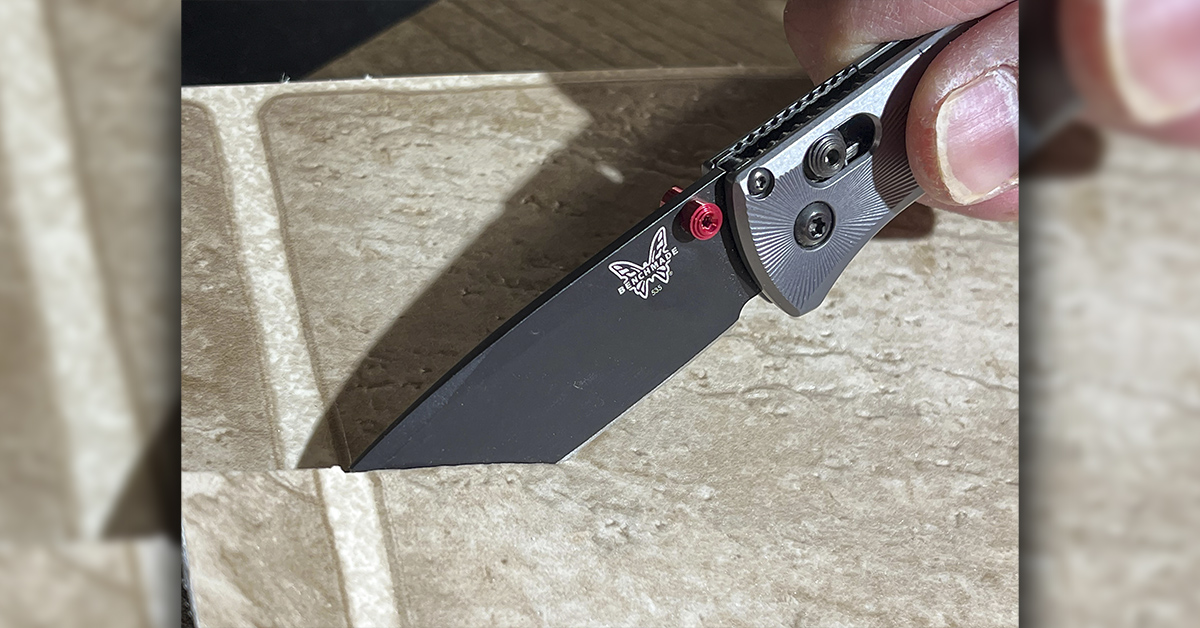
This easy, multi-use adaptability is also desirable in an EDC folder. The S30V blade steel has an excellent reputation in the industry as being one of the best edge-holding steels out there, but at the same time, it is notorious for being quite challenging to resharpen. The trick to managing S30V is to have a diamond sharpener and shift the mindset from working on the edge when it is dull to edge maintenance, where you frequently sharpen depending on the use to help keep that edge up. This is the key. The Bugout shines in this respect for more delicate tasks where control is required. The knife is ultralight, making it easy to control.
The full flat grind geometry of the blade gives the edge incredible bite and, thus, easy command of the job. The deep carry pocket clip does an excellent job securing the knife to your pocket, although this style of clip tends to be a love-it-or-hate-it proposition.
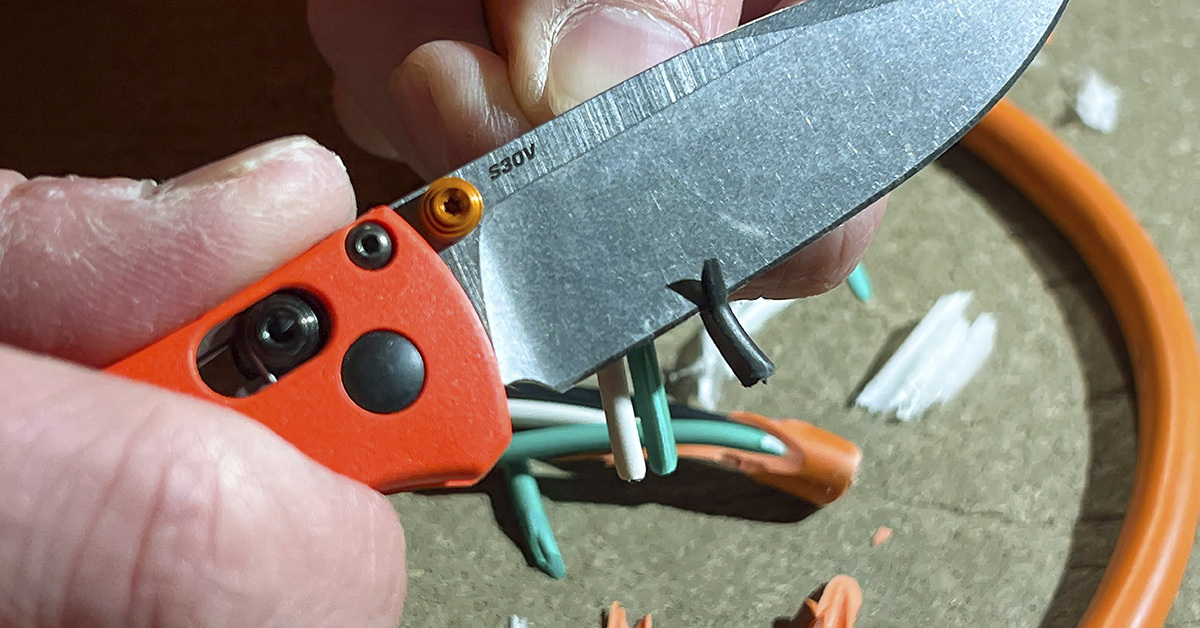
Why?
The deep carry clips carry the knife completely low in the pocket, so there is nothing to grab onto to pull the knife out. There is a generous-sized lanyard hole integrated into the rear of the handle that you can insert some paracord through and use to pull the knife out of the pocket. The handle is comfortable, but some with bigger hands might find it too thin. Once you get used to it, though, it’s not bad at all. The standard Grivory and CF Elite materials offer texturing on the handles for grip with a special checkered section to enhance grip traction.
The carbon fiber of the 535-3 is a matte finish and not textured as most carbon fiber scales are. The 535BK-4 has a machined ray pattern, which not only provides a stunning appearance, but the machining pattern adds some grip traction as well. The Bugout’s flat handle design carries well in a full dress suit or jeans. It’s a modern urban carry knife that is a chameleon, able to blend in with looks and function.
You can also judge the sheer popularity of a knife not from just its number of factory variants or exposure on social media and the internet in general but by the fact that there are aftermarket handle scales you can purchase for it.
There are some companies such as, but not limited to, Flytanium, Meton Boss, and Berkshire Forge that specialize in manufacturing and selling aftermarket handle scales in titanium, G-10, micarta, carbon fiber, copper, brass, and zirconium. At minimal cost, you can purchase high-end handle materials for your full-size 535 Bugout, and this will allow you to fully customize your own Bugout, getting rid of the Grivory or CF Elite handles that came on the knife from the factory.
These materials may increase the knife’s overall weight but retains the complete Bugout profile and versatility. Search the internet for knife retailers selling these aftermarket handles by these companies and you will see pricing, pictures, and ordering information.
So, if you are looking for your next EDC folding knife, check out the Bugout in all its flavors and sizes to see which suits you best.



